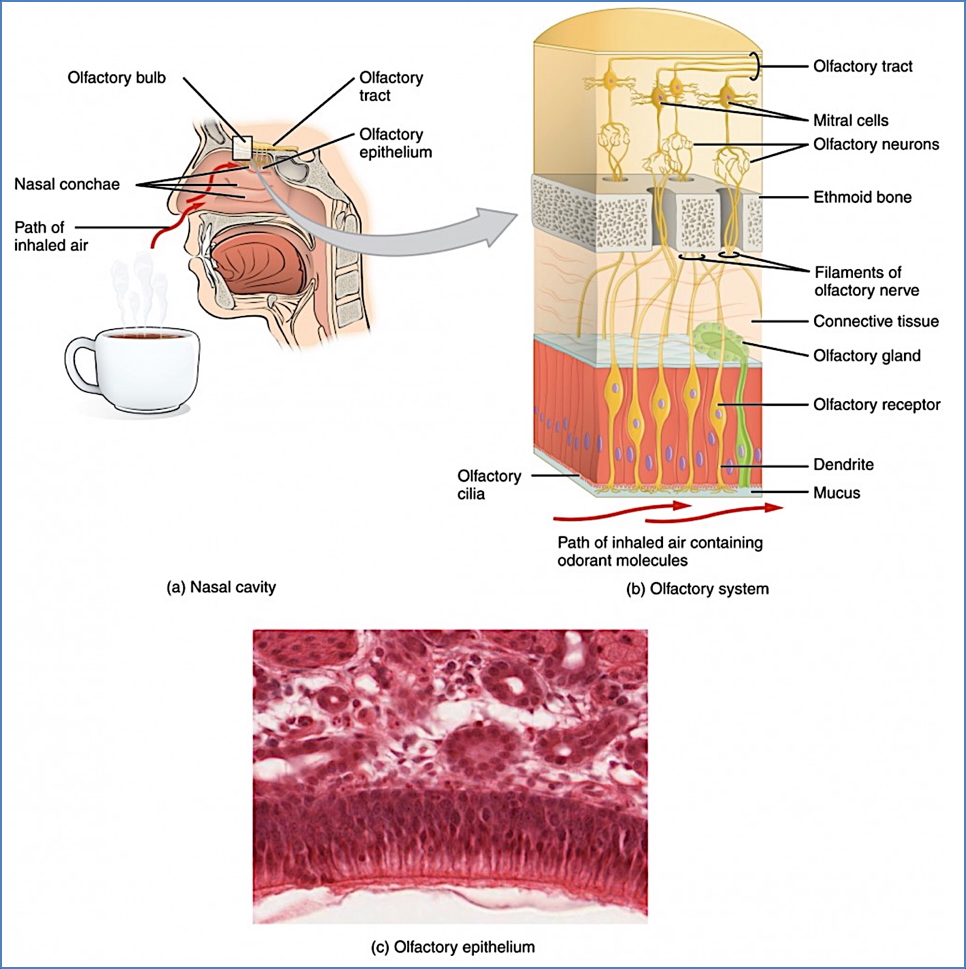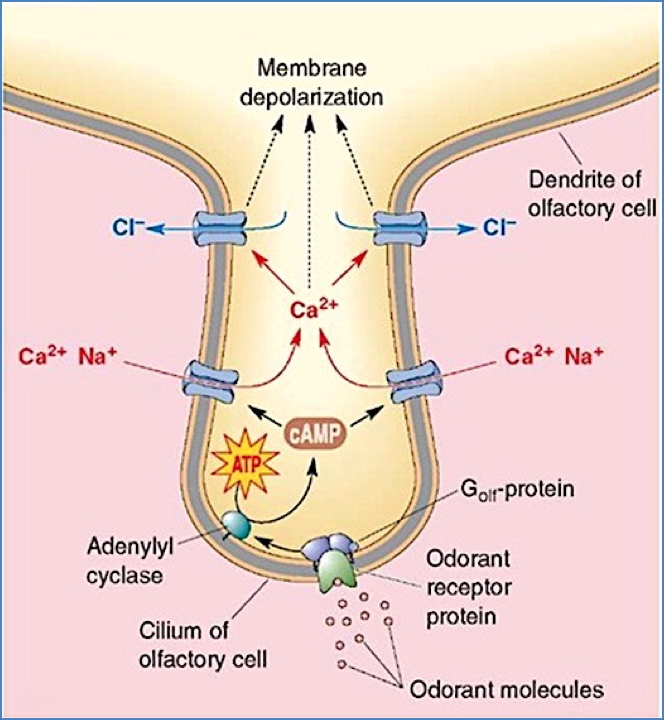Table of Contents
Overview – Olfaction (Smell)
Olfaction, or the sense of smell, plays a vital role in detecting environmental cues, contributing to flavour perception, and influencing behaviour via limbic system pathways. Olfactory receptors in the nasal cavity detect airborne chemicals, transduce them into neural signals, and convey them directly to the brain, bypassing the thalamus for some functions. Clinically, olfaction is significant in neurodegenerative disease, cranial nerve pathology, and head trauma assessment.
Olfactory Epithelium
- Location:
- 5 cm² patch of pseudostratified columnar epithelium in the roof of the nasal cavity
- Cell Types:
- Olfactory receptor cells (modified bipolar neurons)
- Supporting cells
- Basal cells (stem cells that replace receptor cells ≈ every 60 days)
- Structure:
- Receptor cells have apical olfactory cilia in the mucus layer (↑ surface area)
- Thin, unmyelinated axons → form Olfactory Nerve (CN I)
- Axons pass through the cribriform plate → Olfactory Bulb

Olfactory Receptor Specificity
- Humans can detect ≈10,000 odours
- Each olfactory receptor cell expresses one type of odorant receptor protein
- ≈1000 olfactory receptor genes encode these odorant-binding proteins
- Odours are detected as combinations of receptor activation patterns (not fixed categories like taste)
Physiology of Smell
- Odour molecules must:
- Dissolve in nasal mucus
- Bind to odorant-binding proteins on cilia
- Activate G-protein → Adenylate cyclase → ↑ cAMP
- cAMP opens cation channels → Na⁺/Ca²⁺ influx → Depolarisation
- Action potential generated → signal to olfactory bulb

Olfactory Pathway
- Olfactory receptors
- Glomeruli in olfactory bulb (1 receptor type per glomerulus)
- Mitral cells relay via:
- Olfactory tracts to either:
- Thalamus → Olfactory Cortex & Frontal Lobe → conscious perception
- Hypothalamus, Amygdala, Limbic System → emotional/autonomic responses
- Olfactory tracts to either:
Desensitisation & Adaptation
- Granule cells in the olfactory bulb release GABA → inhibit mitral cells
- Helps suppress background odours → only strong/new signals are perceived
- Explains rapid adaptation to persistent smells
Clinical Relevance
- Olfactory loss (anosmia or hyposmia) may indicate:
- Head trauma (cribriform plate fracture)
- Early Parkinson’s or Alzheimer’s disease
- COVID-19-related anosmia
- Olfactory hallucinations (phantosmias) may be seen in temporal lobe epilepsy
Summary – Olfaction (Smell)
Olfaction involves chemoreceptors in the nasal cavity that transduce airborne chemical stimuli into neural signals via CN I. The olfactory system connects directly with limbic regions, contributing to both conscious perception and emotional responses.
For a broader context, see our Nervous System Overview page.